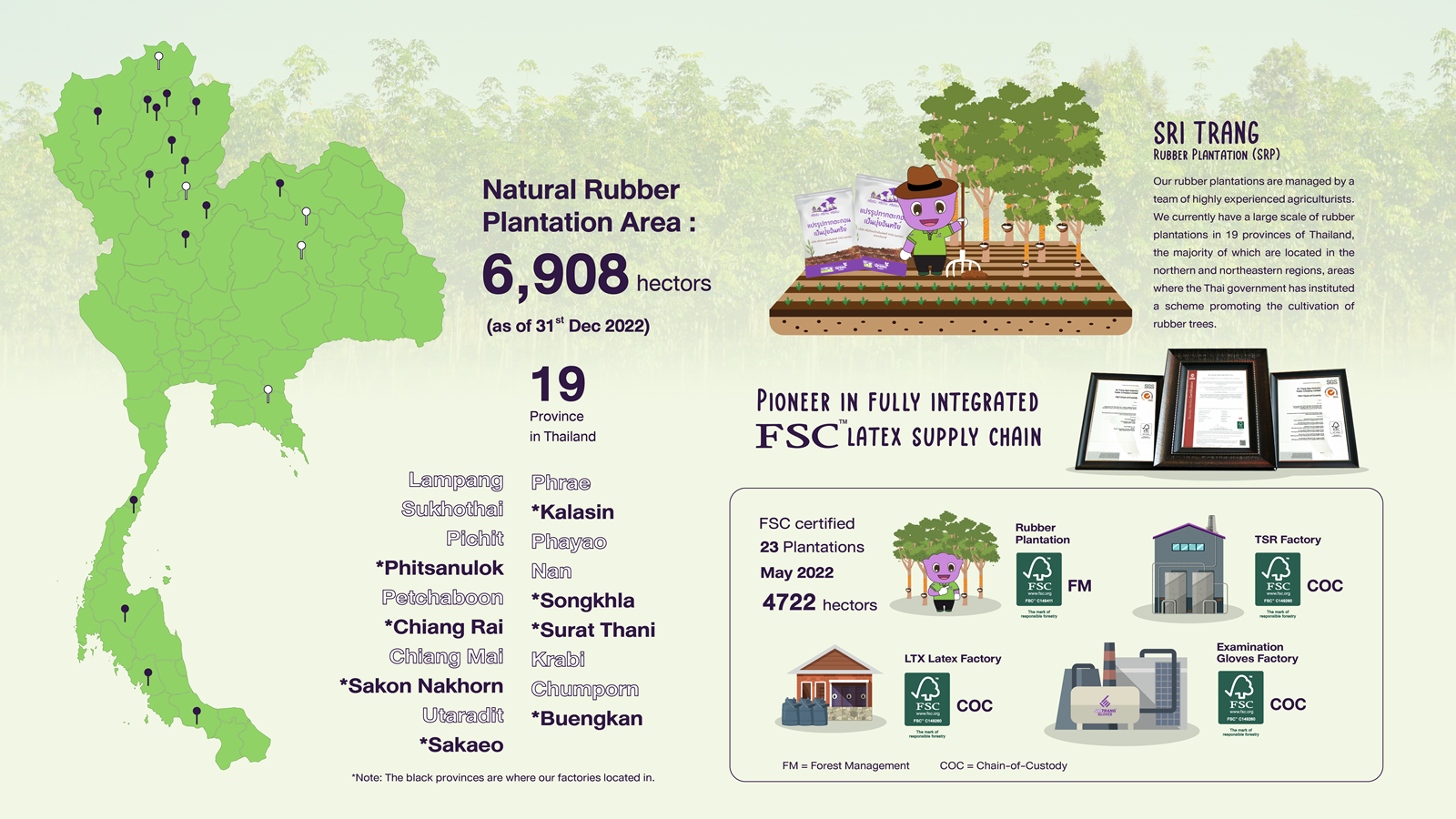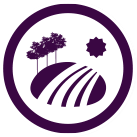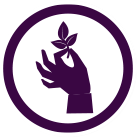Having our own rubber plantations facilitates the procurement of raw materials, enabling better cost control and affording us increased profitability.
Additionally, the plantations themselves also yield a high rate of return. Moreover, at the end of the latex-producing cycle, the rubberwood can be sold to manufacturers of furniture and pallets.
SRP Plantations Overview
| Area | |
|---|---|
| Plantation land | 7,687.88 ha |
| Rubber plantation land | 6,819.68 ha |
| Unplanted area (areas designated for future planting) | 0 ha |
| Economic crops | 832.96 ha |
| Conservation set-aside area, including HCV area | 15.68 ha |
| Conservation set-aside area, including HCV area | 0 ha |
Remark: Information as of December, 2024
SRP Certified Forest Stewardship Council Since 2019
The company has certified 4,482 ha out of 6,861 ha (65%).

Chemicals Used
| Fertilizers | Herbicides | Fungicides |
|---|---|---|
| N-Urea | Glyphosate | Mancozeb |
| DAP (Di Ammonium Phosphate) | 2-4 D (L) | Sulfur (kg) |
| Potassium Chloride (kg) | ||
| Organic Fertilizer |
- The Company and all suppliers no use of paraquat (The Ministry of Industry published its notification to ban the domestic use of paraquat and chlorpyrifos in agricultural production on May 15, 2020, with an effective date of June 1, 2020).
- The Company no use WHO Class 1A and 1B pesticides.
- The Company no use of chemicals listed under the Stockholm Convention and Rotterdam Convention.




